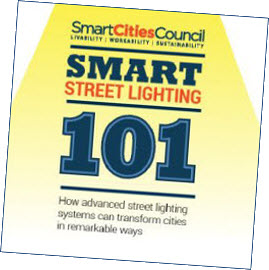
Street lights are ubiquitous in cities today. They light downtowns, parks and public gathering places. They light industrial centers and suburban malls. And they light residential neighborhoods. In fact, street lights stretch into almost every nook and cranny in a city where people live or congregate regularly.
Yet the vast majority of the street lights deployed worldwide are yesterday’s low-efficiency sodium or mercury vapor street lights.
That’s changing, albeit very slowly. Cities and utilities are becoming aware of the benefits of light emitting diode (LED) technology – especially the operational cost savings from LED street lights.
But LEDs and simple control systems that allow dimming and the like just scratch the surface of the potential advantages cities can wring from their lighting assets. Some pioneering cities have recognized that potential and are running pilots that test various “Internet of Things” scenarios. They’re installing components that enable street lights to serve as a Wi-Fi hotspot, deliver announcements and host digital signage. In other scenarios, sensors are being installed to collect data about air quality, available parking spaces and number of people on the street.
Smart Street Lighting 101 is packed with useful information and brief case studies highlighting the benefits cities are accruing as they move to integrated street light networks that can serve as a backbone for other smart city applications.
It is available at no cost to members of the Smart Cities Council. If you have not yet joined, please take a moment to complete a one-time registration. There is no fee to join and registered members have access to all of the site's premium content, including Smart Street Lighting 101. Register now >>